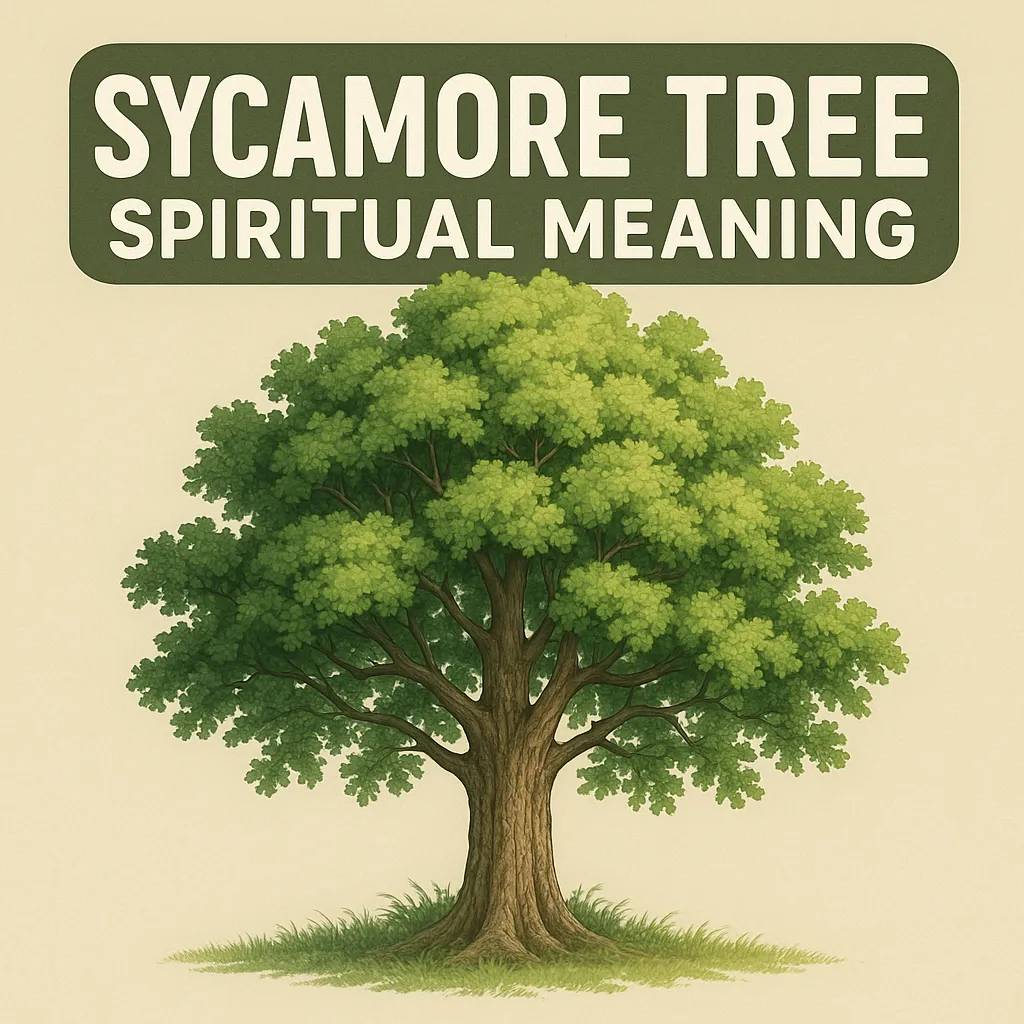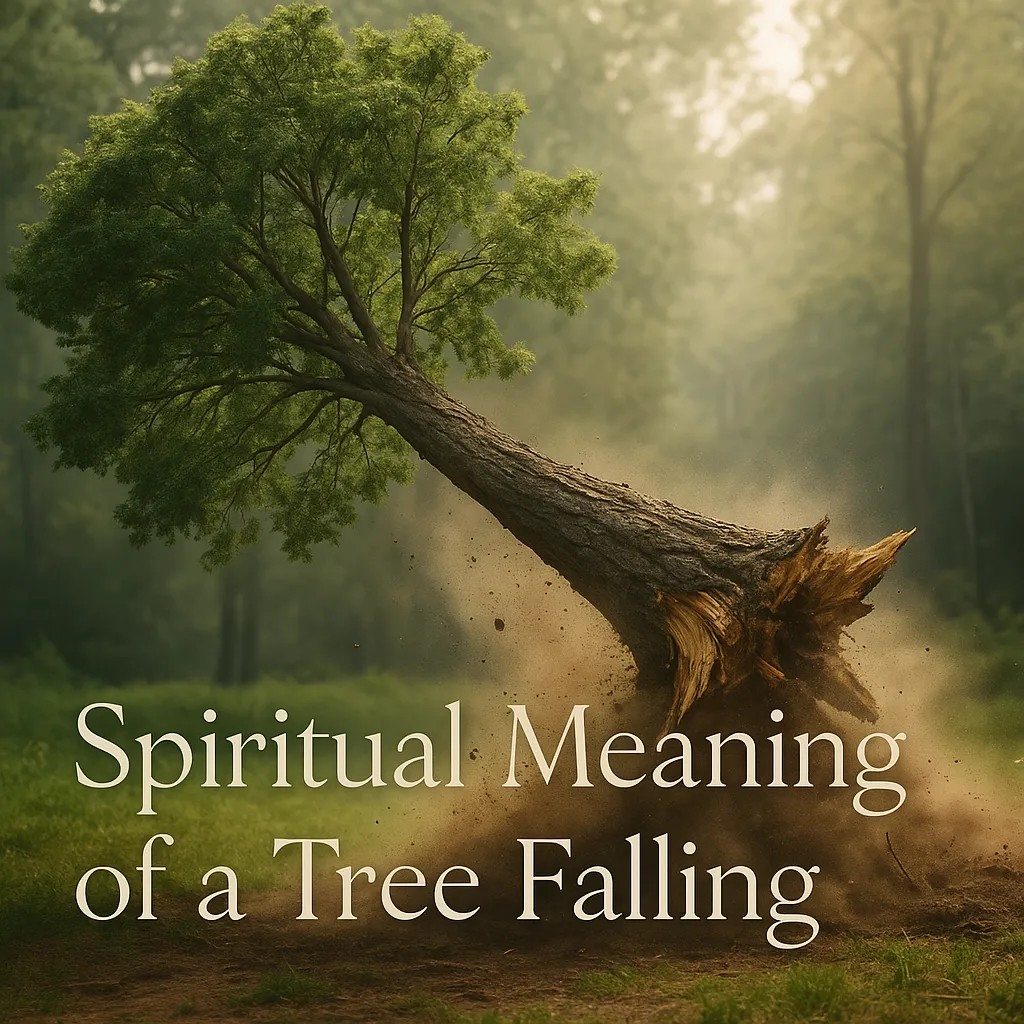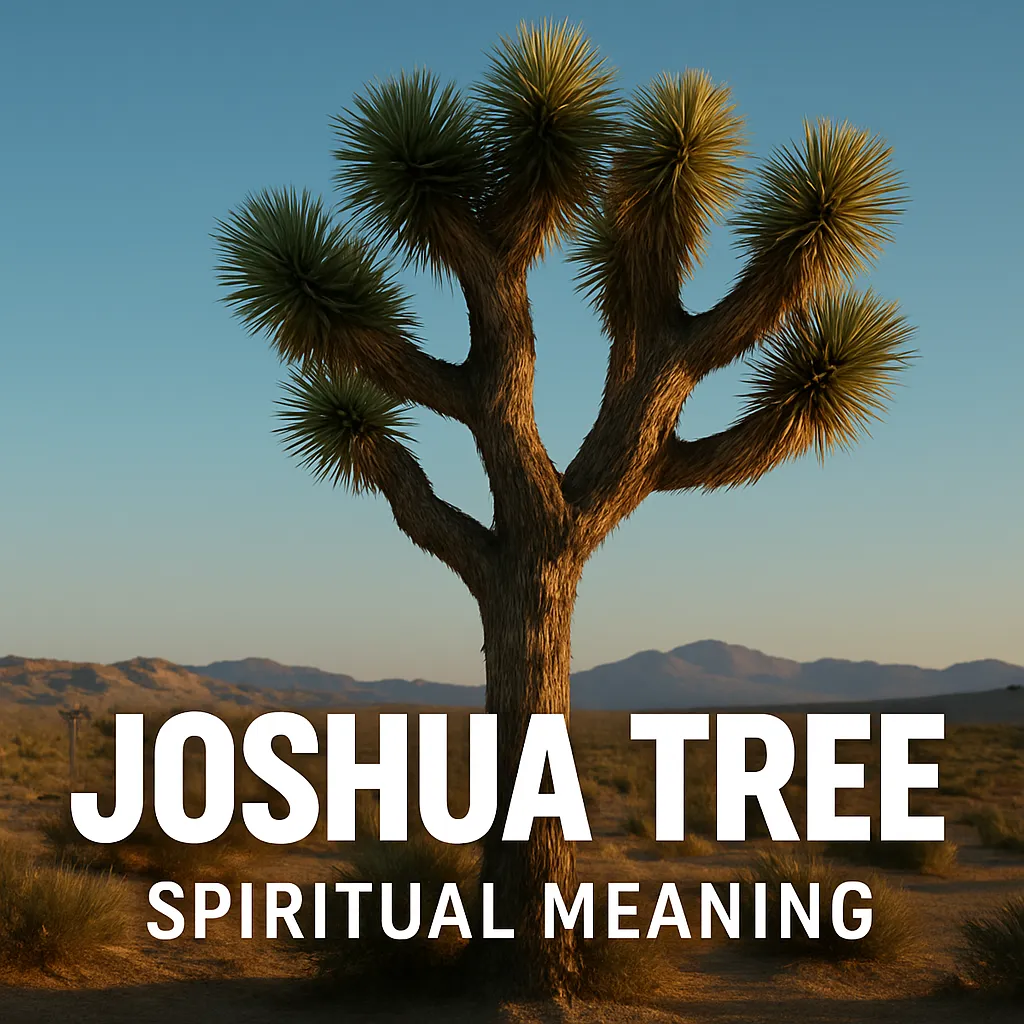In the hushed corners of your soul lies an ancient power waiting to be awakened. Throughout human history, across every civilization and spiritual tradition, symbolic language has served as the key that unlocks our deepest reservoirs of courage and resilience. When life’s challenges mount and your spirit falters, these sacred emblems become beacons of hope—visual anchors that can transform fear into strength in a single moment of recognition. From the delicate lotus rising through murky waters to the fierce protection of animal totems adorning temples and symbols of empowerment tattoos across cultures, these images speak directly to our subconscious, bypassing logical resistance to touch the warrior within.
Table of Contents
- 1 Key Takeaways
- 2 The Psychology of Empowerment Symbols
- 3 Ancient Symbols of Empowerment: A Cross-Cultural Journey
- 4 Sacred Geometry: The Mathematics of Empowerment
- 5 Animal Symbols of Empowerment
- 6 Elemental Symbols of Empowerment
- 7 Modern Symbols of Empowerment
- 8 Empowerment Symbols in Body Art
- 9 Empowerment Symbols in Daily Practice
- 10 Creating Your Own Symbols of Empowerment
- 11 Living a Symbolically Empowered Life
- 12 Frequently Asked Questions
- 12.1 What are the most powerful symbols for strength and courage?
- 12.2 How do I choose the right empowerment symbol for my specific needs?
- 12.3 What should I consider before getting a symbols of empowerment tattoo?
- 12.4 Can I combine different symbols for greater effect?
- 12.5 How often should I work with empowerment symbols for best results?
- 13 Sources
Key Takeaways
- Ancient wisdom encoded in symbols can trigger profound psychological shifts that modern science now confirms
- Symbols work through bypassing conscious resistance, speaking directly to your subconscious mind
- Cross-cultural empowerment symbols reveal universal human truths about courage and inner strength
- Incorporating empowerment symbols through meditation, art, or body adornment creates tangible transformation
- Personal symbolism can be consciously created for addressing specific challenges in your spiritual journey
The Psychology of Empowerment Symbols
The human mind processes visual information differently than verbal or written communication. When you encounter a powerful symbol, your brain responds with an immediate emotional reaction before your analytical mind even begins to interpret its meaning. This phenomenon explains why symbols have maintained their profound impact across millennia.
Psychologist Carl Jung recognized symbols as gateways to what he called the “collective unconscious”—a shared psychological inheritance that connects us all. According to his research, certain symbols appear consistently across cultures that never had contact with each other, suggesting these emblems emerge from universal human experiences.
Modern neuroscience has validated Jung’s insights. Brain imaging studies reveal that viewing sacred symbols activates the brain’s limbic system, associated with emotion and motivation, while simultaneously engaging the prefrontal cortex, responsible for meaning-making and purpose. This powerful combination creates an experience that feels both deeply personal and transcendent.
When we struggle with self-doubt or fear, empowerment symbols serve as visual anchors that bypass our conscious resistance. They speak directly to our deeper selves, triggering profound shifts in how we perceive challenges. This is why many people find that symbolism for confidence can transform their internal state more quickly than rational pep talks or logical arguments.
Symbol Recognition vs. Logical Processing
The potency of symbols comes partly from their ability to communicate complex ideas instantly. Your brain processes a symbolic image approximately 60,000 times faster than written text. A single empowerment symbol can convey strength, protection, transformation, and divine connection in one glance—a message that might take paragraphs to express in words.
This efficiency explains why spiritual traditions worldwide have relied on symbols as teaching tools. When words fail to penetrate our defenses, symbolic language can bypass intellectual barriers and plant seeds of transformation directly into our subconscious minds.
Ancient Symbols of Empowerment: A Cross-Cultural Journey
The most powerful symbols of empowerment have stood the test of time, appearing across continents and centuries with remarkable consistency. While their specific interpretations may vary, their essential messages of strength, protection, and transformation remain constant—evidence of our shared human experience.
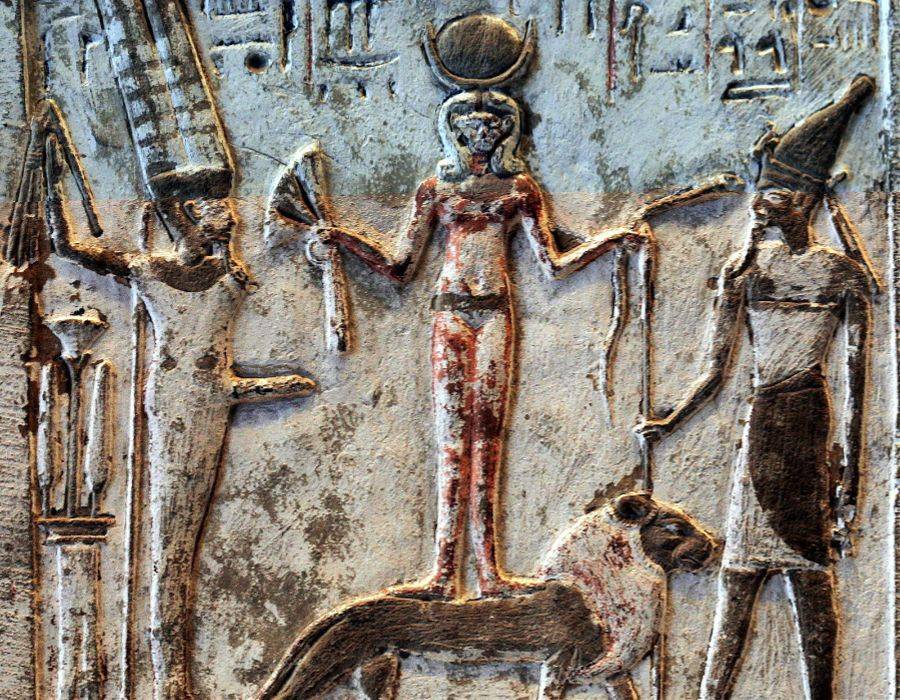
The Ankh: Egyptian Symbol of Life Force
The ankh—a cross topped with a loop—originated in ancient Egypt as the hieroglyph for “life.” Pharaohs and deities are frequently depicted holding this symbol by the loop, offering the gift of eternal life to those worthy of receiving it. More than just longevity, the ankh represents vital creative energy flowing through all things.
In spiritual practice, the ankh serves as a reminder that we always have access to the divine life force, even in our darkest moments. Modern practitioners often use the ankh in meditation by visualizing golden light entering through the crown chakra and flowing through the body in the shape of this powerful symbol.
The ankh’s enduring appeal lies in its elegant simplicity. It combines the masculine (vertical line) and feminine (loop) principles, creating a perfect balance of polarities. This harmony makes it an ideal symbol for those seeking wholeness through integration of opposing energies.
The Lotus: Rising Through Adversity
Few symbols speak more eloquently to the human condition than the lotus flower. Growing from murky depths to bloom immaculately on the water’s surface, it embodies the journey from struggle to enlightenment. The lotus doesn’t merely survive difficult conditions—it requires them to flourish.
In Buddhist tradition, the lotus represents the purification of speech, mind, and body. Different colored lotuses carry distinct meanings: white for spiritual perfection, pink for the Buddha’s earthly manifestation, blue for wisdom and knowledge, and red for compassion and love.
To work with lotus energy during challenging times, try this simple visualization: Imagine yourself as a lotus seed nestled in dark mud. With each breath, feel yourself growing upward through difficulties, transformed by—not despite—these challenges. As you break the water’s surface, envision yourself opening to your fullest potential, untarnished by what you’ve moved through.
The Phoenix: Rebirth and Transformation
When life demands complete reinvention, the phoenix offers powerful symbolism for the process of death and rebirth. This mythical firebird appears in Greek, Egyptian, Chinese, and Native American traditions, always with the same essential story: it lives for centuries, builds its own funeral pyre, burns to ashes, and rises renewed.
The phoenix reminds us that endings are necessary for beginnings. When we cling to what must be released, we prevent our own regeneration. This symbol speaks directly to those experiencing major life transitions—career changes, relationship endings, recovery from illness, or spiritual awakening.
In transformational work, the phoenix serves as a visual reminder that breakdown precedes breakthrough. By embracing necessary endings rather than resisting them, we align ourselves with the natural cycles of destruction and creation that govern all life.
The Tree of Life: Connection and Growth
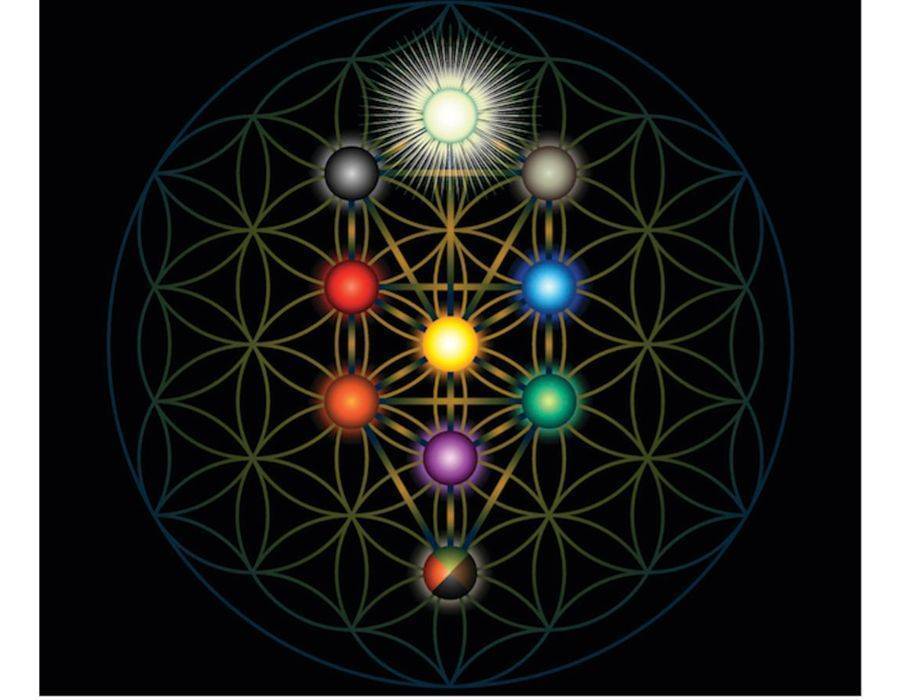
Appearing in traditions from Norse mythology to Kabbalah, the Tree of Life symbolizes the interconnectedness of existence. Its roots reach into the underworld while its branches stretch toward heaven, bridging different planes of reality. The trunk represents our present journey, connecting past (roots) and future (branches) in a living continuum.
In Kabbalah, the Tree of Life depicts the path of divine energy flowing through creation, manifesting through ten sephirot (spheres) connected by 22 paths. Each sphere represents a divine attribute that we can cultivate within ourselves. This complex symbol offers a complete symbols of power system for personal development and spiritual understanding.
To work with Tree of Life energy, stand with feet shoulder-width apart, arms extended upward with fingers spread like branches. Feel yourself as a living conduit between earth and sky, drawing nourishment from below and inspiration from above. This embodied practice helps restore a sense of purpose and connection during times of isolation or meaninglessness.
The Dragon: Primal Power and Wisdom
Dragons appear in virtually every cultural mythology, though with fascinating differences. Eastern dragons typically embody wisdom, good fortune, and natural harmony, while Western dragons often represent challenges to be overcome. In both traditions, however, dragons guard transformative treasures—whether literal gold or spiritual enlightenment.
The dragon represents primordial creative power that can either serve or consume us, depending on how we relate to it. Learning to “dance with the dragon” means acknowledging our most potent energies—including rage, passion, and ambition—and channeling them constructively rather than suppressing them.
For those seeking to access their primal strength, dragon imagery provides a powerful focal point. Visualizing a dragon ally during challenging situations can help you tap into reserves of courage and determination that rational mind alone cannot access.
Sacred Geometry: The Mathematics of Empowerment
Beyond pictorial symbols, certain geometric patterns appear consistently in spiritual traditions worldwide. These sacred forms reveal the mathematical principles underlying physical reality, connecting visible matter to invisible energetic structures.
The Spiral: Evolution and Expansion
The spiral—found in seashells, galaxies, and DNA—represents dynamic growth that maintains connection to its origin. Unlike a circle (which returns to the same point) or a line (which abandons its beginning), a spiral evolves while remembering. This makes it a perfect symbol for authentic personal development.
Walking a spiral pattern—either physically or through visualization—creates a meditative journey that honors both where you’ve been and where you’re going. Start from the outside and move inward for introspection and healing; begin at the center and spiral outward for expansion and manifestation.
The Merkaba: Harmonizing Spiritual and Physical Reality
The Merkaba—formed by two interlocked tetrahedrons—represents the perfect balance of heaven and earth, spirit and matter. In Hebrew mysticism, this “chariot of light” serves as a vehicle for consciousness to travel between dimensions. The upward-pointing tetrahedron represents masculine energy reaching toward spirit, while the downward-pointing form embodies feminine energy grounding spiritual wisdom into physical reality.
Merkaba meditation involves visualizing these intersecting energy fields rotating in opposite directions around your body, creating a light vehicle that aligns your physical, emotional, and spiritual aspects. This practice helps overcome the illusion of separation between material and spiritual realms.
The Sri Yantra: Manifestation Through Sacred Geometry
The Sri Yantra—a complex mandala of interlocking triangles—represents the union of masculine and feminine principles that creates all reality. At its center lies the bindu, the point of creation from which all forms emerge. The triangles pointing upward represent Shiva consciousness, while those pointing downward embody Shakti energy.
Meditating on this symbol harmonizes opposing forces within, creating internal conditions conducive to manifestation. The Sri Yantra’s mathematical precision speaks to the rational mind while its beauty engages the intuitive self, making it particularly effective for those who struggle with purely conceptual meditation.
Animal Symbols of Empowerment
Animals have served as powerful symbols throughout human history, embodying qualities we seek to develop within ourselves. Indigenous traditions worldwide recognize animals as spiritual teachers whose medicine (essential wisdom) we can access through respectful relationship.
The Eagle: Vision and Freedom
The eagle soars higher than any bird, giving it the broadest perspective. In Native American traditions, Eagle medicine represents spiritual vision—the ability to see beyond immediate circumstances to the larger pattern. With its keen eyesight, the eagle can spot tiny movements from great heights, symbolizing the capacity to focus on essential details without losing sight of the big picture.
When facing complex decisions or feeling lost in confusion, eagle energy helps you rise above emotional entanglement to see situations clearly. To connect with eagle medicine, find a high place in nature where you can observe the landscape. As you gaze outward, invite eagle’s perspective on your current challenges.
The Lion: Courage and Leadership
The lion appears in spiritual iconography worldwide as a symbol of noble courage. In Egyptian mythology, the sphinx (part lion, part human) guards sacred knowledge. In Buddhist tradition, the Buddha is called the “Lion of the Shakyas,” roaring the dharma fearlessly. In Christian symbolism, the lion represents both Christ’s majesty and the courage of martyrs.
Lion energy teaches us to lead from authentic power rather than domination. The lion doesn’t need to prove its strength constantly—its presence alone commands respect. Similarly, true confidence doesn’t require aggression or constant demonstration.
To channel lion medicine during intimidating situations, straighten your posture, lower your shoulders, and breathe deeply into your lower abdomen. Feel the symbolism for transformation occurring as your center of gravity shifts downward, creating the physical sensation of unshakable presence.
The Owl: Wisdom and Intuition
With its ability to see in darkness and rotate its head almost completely around, the owl symbolizes perception beyond ordinary limits. Across cultures, owls represent wisdom, mystery, and connection to hidden knowledge.
Owl medicine teaches us to trust our intuition and see past deception—including self-deception. When we’re avoiding uncomfortable truths, owl energy helps us turn our heads to view what we’ve been ignoring.
To develop owl-like intuition, practice being still and receptive. In meditation, ask a question then sit in complete silence, attending to subtle impressions rather than analytical thoughts. Owl wisdom often comes as a feeling in the body or a quiet knowing rather than a logical conclusion.
The Bear: Strength and Introspection
Bears embody seemingly contradictory qualities: tremendous physical power alongside gentle nurturing instincts. Their annual hibernation cycle represents the necessity of introspective withdrawal for sustainable strength. Bear medicine teaches us that true power includes knowing when to act and when to rest.
In Norse tradition, the berserker warriors channeled bear spirit for battle courage. In Native American practice, Bear often serves as a healing guide, leading seekers to medicinal plants and restoration practices.
When feeling depleted or overwhelmed, bear energy reminds us to honor our natural cycles rather than pushing constantly forward. Creating deliberate periods of withdrawal—whether through meditation, nature time, or simply declining social invitations—allows our internal resources to replenish.
Elemental Symbols of Empowerment
The classical elements—Fire, Water, Earth, and Air (with Spirit sometimes added as a fifth)—provide a comprehensive framework for understanding different aspects of personal power. These primal forces represent both external energies and internal qualities we can cultivate.
Fire: Transformation and Passion
Fire symbolizes the transformative power that burns away what no longer serves us while igniting our passions and creative drive. As the only element that can transform other elements permanently, fire represents irreversible change and purification.
In spiritual traditions worldwide, fire ceremonies mark major transitions. From the Zoroastrian eternal flame to Hindu wedding fire rituals to Native American sweat lodges, sacred fire witnesses and catalyzes transformation.
To work with fire energy when feeling stagnant, light a candle with intention. Write what you wish to release on a small piece of paper, then safely burn it while visualizing old patterns transforming into light and heat that fuel your new direction.
Water: Emotion and Intuition
Water represents our emotional depths and intuitive wisdom. Like water, emotions can be gentle nurturers or overwhelming floods; they can stagnate in depression or flow freely in joy. Water teaches adaptability—finding the path of least resistance while persistently shaping even the hardest stone through consistent presence.
Water rituals for emotional healing include spiritual bathing, where specific herbs, salts, or essential oils are added to bathwater with prayers or intentions. Even simple hand-washing can become a mindful practice of releasing emotional residue from challenging interactions.
When emotions feel turbulent, visualize yourself standing in a stream. See your feelings as leaves floating on the water’s surface, acknowledging each without needing to grab or push it away. This practice helps develop emotional presence without identification.
Earth: Stability and Manifestation
Earth symbolizes material abundance, practicality, and grounded presence. Earth energy helps us manifest intentions into tangible reality and maintain stability during chaotic times. While water adapts and fire transforms, earth provides the consistent foundation from which growth emerges.
Earth rituals often involve direct contact with soil, stone, or plants. Walking barefoot on natural ground (earthing) has been scientifically shown to reduce inflammation and stress hormones while improving sleep quality. Creating or tending a garden—even a single potted plant—establishes relationship with earth’s generative power.
When feeling ungrounded or anxious, hold a stone in each hand while focusing on your breath. Feel the weight and temperature of the stones, allowing their stable presence to anchor your awareness in present physical reality.
Air: Intellect and Freedom
Air represents our intellectual capacity, communication skills, and longing for freedom. As the most invisible element, air reminds us that powerful forces exist beyond what we can see. The breath that sustains life exemplifies air’s essential yet often unnoticed presence.
Air rituals frequently involve sound, which travels through air as vibration. Chanting, singing bowls, wind chimes, and whistling all work with air energy. Feathers serve as air symbols in many traditions, used for purification and clearing stagnant energy.
When mental clarity is needed, practice mindful breathing outdoors. Feel the distinction between internal and external air as you breathe, recognizing how this continuous exchange connects you to everything around you. Allow fresh perspectives to enter with each inhalation.
Modern Symbols of Empowerment
While ancient symbols carry the weight of centuries, contemporary symbols speak directly to modern challenges. These newer emblems of empowerment emerge from social movements, technological developments, and evolving spiritual understanding.
The Raised Fist: Solidarity and Resistance
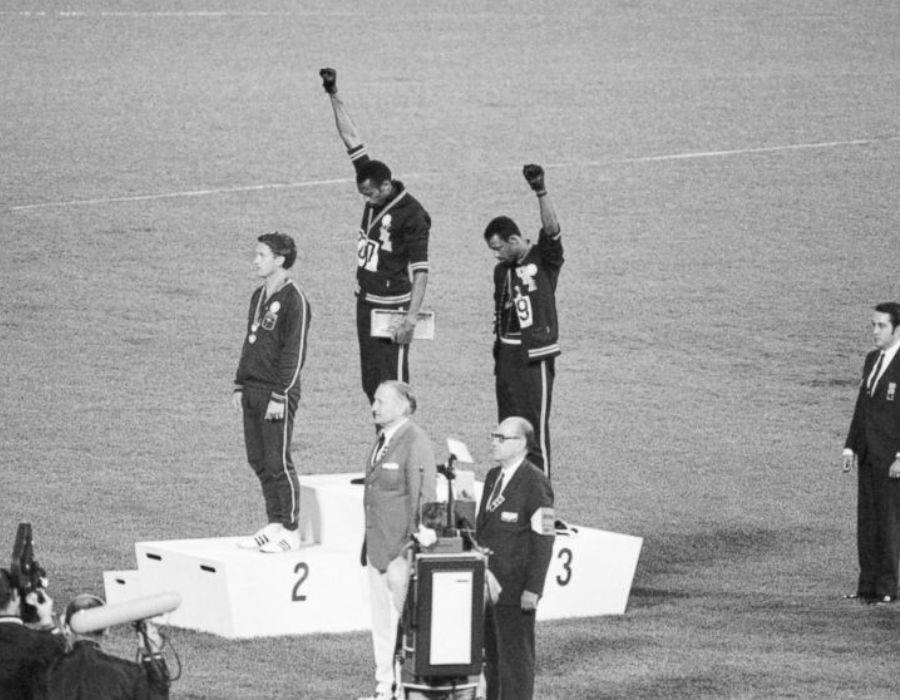
The raised fist emerged as a powerful symbol of solidarity during labor movements of the early 20th century and gained prominence during civil rights and Black Power movements of the 1960s. This gesture communicates unified resistance against oppression and determination to create change through collective action.
The spiritual dimension of the raised fist lies in its embodiment of righteous anger transformed into constructive purpose. Unlike rage that consumes indiscriminately, this focused energy directs itself toward specific injustices while maintaining connection to communal values.
In personal practice, the raised fist can symbolize your commitment to stand firm in your truth, even when facing opposition. The physical gesture activates the arm, shoulder, and core muscles, creating an embodied experience of strength rising from your center.
The Equals Sign: Balance and Justice
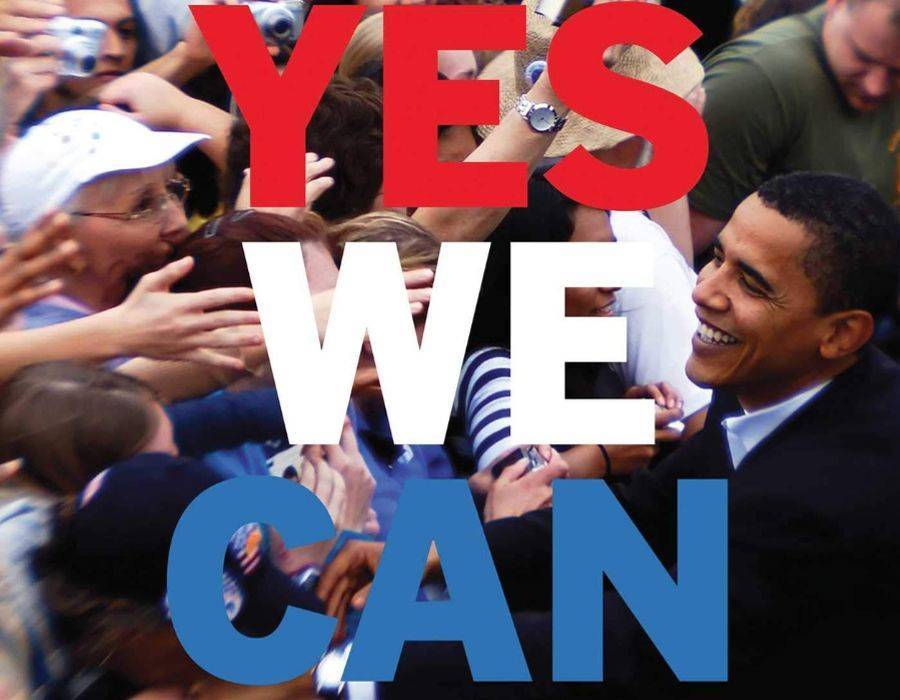
Adopted by the Human Rights Campaign in 1995 as a symbol for marriage equality, the equals sign has expanded to represent the broader principle of equal dignity for all people. Its mathematical precision communicates that human worth is not subjective or debatable but a fundamental truth.
Spiritually, the equals sign reminds us of our essential oneness beneath surface differences. It challenges hierarchical thinking that places some beings above others, aligning with the core teaching of many wisdom traditions that separation is an illusion.
In personal development, the equals sign encourages balanced giving and receiving. Many spiritual seekers excel at service but struggle with accepting help or acknowledging their own needs. This symbol reminds us that sustainable spiritual practice requires equilibrium.
Rosie the Riveter: Feminine Strength
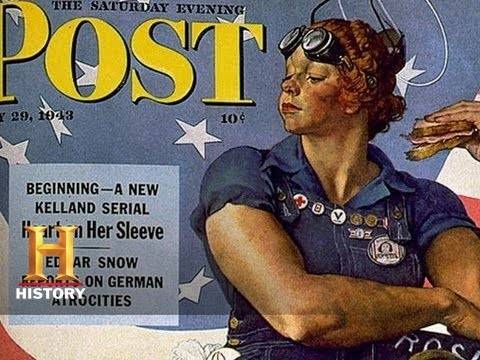
The iconic image of Rosie the Riveter—a woman in workwear flexing her bicep beneath the phrase “We Can Do It!”—originated as World War II propaganda but has evolved into a feminist emblem of women’s capability and economic power. Unlike traditional feminine symbols emphasizing receptivity or nurturing, Rosie celebrates women’s active strength and productive capacity.
Spiritually, Rosie represents the divine feminine as creator rather than merely vessel—a potent counter to religious traditions that have sometimes limited women’s spiritual authority. She embodies the Shakti principle found in Hindu tantra: the active, manifesting power of the universe in feminine form.
For personal empowerment, Rosie inspires us to roll up our sleeves and do the necessary work rather than waiting for rescue or permission. Her practical approach reminds us that spiritual growth requires active participation, not just passive reception.
Empowerment Symbols in Body Art
Throughout history, humans have inscribed meaningful symbols directly on their bodies, creating permanent connections to empowering spiritual concepts. Contemporary tattoo practices continue this ancient tradition, with symbols of empowerment tattoos serving as constant visual reminders of inner strength and personal commitments.
Empowerment Tattoos Across Cultures
Traditional tattooing practices often carry profound spiritual significance. Samoan pe’a tattoos mark the transition to manhood and establish connection to ancestral wisdom. Thai sak yant tattoos, applied by Buddhist monks, confer specific protections and powers. Inuit women’s facial tattoos traditionally connect them to goddess energies and feminine mysteries.
Modern practitioners draw inspiration from these traditions while creating personal symbolic languages. A lotus emerging from muddy waters might represent a specific triumph over adversity. A phoenix could mark recovery from addiction or illness. The Tree of Life might commemorate a spiritual awakening or connection to family heritage.
Popular Empowerment Symbol Tattoos
Certain empowerment symbols appear frequently in contemporary tattoo art:
- The unalome (representing the path to enlightenment in Buddhist tradition)
- The semicolon (signifying continuation of life’s story after contemplating ending it)
- The triquetra or triple knot (symbolizing interconnection of mind, body, and spirit)
- Arrows (representing moving forward despite opposition)
- Compass designs (symbolizing finding one’s true direction)
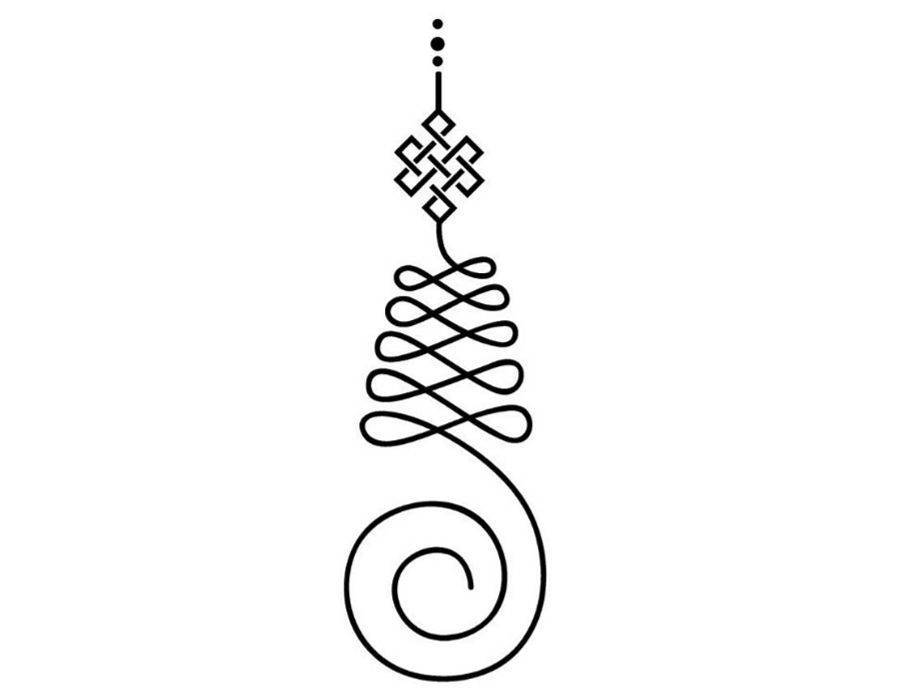
The power of these tattoos comes partly from their permanence. Unlike temporary symbols you might employ situationally, tattooed emblems create an unbreakable bond with their meanings. This commitment itself becomes a source of strength—a declaration that certain values or insights have been permanently integrated into your identity.
Creating a Personal Empowerment Tattoo
If considering an empowerment symbol tattoo, take time for discernment and research. Questions to explore include:
- What specific quality am I seeking to embody or remember?
- Does this symbol have cultural or religious significance requiring respectful consideration?
- How might the meaning of this symbol evolve throughout my life journey?
- Where on my body would this symbol best serve its purpose? (Consider both visibility and energetic correspondences)
Collaboration with an artist who understands symbolic language can enhance the tattoo’s power. Many talented tattooists have studied sacred geometry, mythology, and traditional symbolism, allowing them to suggest refinements that strengthen the symbol’s integrity and impact.
Empowerment Symbols in Daily Practice
Symbols gain power through consistent engagement. Rather than passive talismans, they become activation keys for inner resources when incorporated into regular spiritual practice. The following approaches help integrate symbolic wisdom into everyday life.
Meditation with Empowerment Symbols
Visual meditation with empowerment symbols creates deeper connections than intellectual understanding alone. Try this basic practice:
- Select a symbol that resonates with a quality you wish to develop.
- Place an image of this symbol at eye level or visualize it clearly.
- Begin with several minutes of rhythmic breathing to center yourself.
- Gaze softly at the symbol, allowing your focus to relax slightly.
- Imagine the symbol growing larger, surrounding and filling you with its essence.
- Notice sensations, emotions, or insights that arise without analyzing them.
- Close by placing your hands over your heart, integrating the experience.
Regular practice with the same symbol deepens its impact over time. Many practitioners report that symbols begin appearing in dreams or spontaneous visualizations, indicating deeper subconscious integration.
Creating a Personal Altar or Sacred Space
Designating physical space for symbolic representation creates a tangible anchor for spiritual practice. An empowerment altar might include:
- Images or figurines of empowering symbols
- Elements representing personal strengths and aspirations
- Natural objects carrying symbolic significance (feathers, stones, shells)
- Photos of inspiring mentors or ancestors
- Journal for recording insights and experiences
This space need not be elaborate—even a small shelf or corner can serve effectively. What matters is creating clear intention and regular engagement. Spending even a few moments daily acknowledging your altar helps integrate symbolic wisdom into ordinary consciousness.
Symbol Journaling for Self-Discovery
Writing and drawing exercises with empowerment symbols reveal deeper personal connections and applications. Try these approaches:
- Symbol dialogue: Write a conversation between yourself and a chosen symbol
- Symbol mapping: Draw a symbol in the center of a page, then add radiating notes about areas of life where this energy is needed
- Symbol autobiography: Trace your history with a particular symbol, noting when and how it has appeared throughout your life
- Symbol transformation: Draw a sequence showing how a symbol evolves as you work with its energy
These exercises bypass analytical thinking to access intuitive understanding. They often reveal surprising connections and applications that rational consideration alone might miss.
Empowerment Symbol Affirmations
Combining verbal affirmations with visual symbols creates multisensory reinforcement. For each empowerment symbol you work with, craft a concise statement that captures its essence as it applies to your life.
Examples:
- Phoenix: “I transform challenges into opportunities for rebirth.”
- Lotus: “I rise through difficulties with my essence intact.”
- Tree of Life: “I stand rooted in wisdom while reaching toward new possibilities.”
Repeat these affirmations while visualizing or touching the corresponding symbol. This practice aligns conscious intention with symbolic power, creating stronger neurological pathways for accessing these qualities when needed.
Creating Your Own Symbols of Empowerment
While traditional symbols carry the weight of collective recognition, personally created symbols can speak directly to your unique journey. The process of conscious creation itself becomes an empowering act of spiritual authority.
The Components of Effective Symbols
Powerful personal symbols generally incorporate:
- Visual simplicity that can be easily recalled and reproduced
- Personal resonance with your specific challenges and aspirations
- Emotional impact that creates immediate state change when viewed
- Multiple layers of meaning that unfold through continued contemplation
- Elements that connect to universal symbolic language while remaining unique
Consider working with basic shapes (circles, triangles, spirals), natural elements (animals, plants, celestial bodies), and meaningful personal imagery. The most effective symbols often combine abstract geometric forms with recognizable natural elements.
Intuitive Symbol Creation Process
Try this method for accessing deeper symbolic wisdom:
- Identify a specific quality or resource you wish to develop.
- Enter a meditative state through breath awareness or your preferred technique.
- Ask your intuition to show you a personal symbol for this quality.
- With closed eyes, notice what images begin to form in your mind’s eye.
- Without judging or analyzing, sketch what you see, however rudimentary.
- Refine the image until it feels complete, trusting your intuitive sense.
- Sit with the completed symbol, noticing what sensations or insights arise.
This process often yields surprising results that wouldn’t emerge through logical design. The symbol’s effectiveness comes not from artistic perfection but from authentic connection to your subconscious wisdom.
Charging and Activating Personal Symbols
Once created, your personal symbol needs energetic activation. Consider these approaches:
- Perform a dedication ritual where you state the symbol’s purpose and commit to working with it
- Place the symbol where it will receive sunlight or moonlight for natural charging
- Carry the symbol with you during activities that embody its qualities
- Share its meaning with trusted others, allowing witnessed declaration to strengthen your commitment
Regular engagement keeps the symbol energetically active. Unlike commercial logos designed for passive recognition, spiritual symbols require participatory relationship to maintain their transformative power.
Living a Symbolically Empowered Life
The ultimate goal isn’t merely collecting or studying empowerment symbols but integrating their wisdom into everyday consciousness. A symbolically empowered life finds meaningful patterns in ordinary experiences and accesses inner resources through intentional symbolic practice.
This integration happens gradually through consistent engagement. You might begin by working consciously with a single symbol during challenging situations. Over time, you’ll find yourself spontaneously accessing symbolic wisdom when needed, even without physical representations present.
The most profound transformation occurs when you recognize yourself as both interpreter and creator of symbolic meaning. Rather than simply adopting traditional interpretations, you develop personal relationships with symbols that evolve throughout your spiritual journey.
Remember that empowerment symbols aren’t magic bullets but keys that unlock what already exists within you. Their power comes not from external authority but from their ability to connect you with your own innate wisdom and resilience—qualities that have always been yours but sometimes get forgotten in life’s challenges.
Begin today by selecting one symbol that resonates with a quality you wish to develop. Place its image where you’ll encounter it regularly, perhaps as your phone background or on your bathroom mirror. Each time you notice it, pause briefly to connect with its energy. This simple practice, continued over weeks and months, creates neural pathways that make accessing this quality increasingly natural.
The journey of symbolic empowerment isn’t about arriving at a destination but about traveling with greater awareness, purpose, and connection to the sacred dimensions of everyday life.
Frequently Asked Questions
What are the most powerful symbols for strength and courage?
The most universally recognized symbols for strength and courage include the lion (noble courage), the oak tree (enduring strength), the mountain (immovable power), and the dragon (primal force). However, the most powerful symbol for you personally will be one that creates an immediate internal response when viewed. This might be a traditional symbol or something unique to your experience. The key is finding imagery that bypasses your analytical mind to directly access your inner reserves of courage.
How do I choose the right empowerment symbol for my specific needs?
Start by clearly identifying the specific quality you wish to develop—clarity, courage, resilience, etc. Then explore both traditional and personal symbols while noticing your body’s response. Effective symbols often create a physical sensation like warmth, expansiveness, or energetic alignment. Trust this embodied wisdom over intellectual preference. Consider working with different symbols for different challenges rather than seeking a single all-purpose emblem.
What should I consider before getting a symbols of empowerment tattoo?
Before committing to a permanent empowerment symbol, spend time working with the image through meditation, journaling, and carrying temporary versions (like drawn on paper). Research its cultural origins and meanings to ensure respectful use. Consider where on your body the symbol will best serve its purpose—visible for constant reminders or private for personal contemplation. Discuss your intentions with a tattoo artist experienced in spiritual symbolism, who may offer insights about effective placement and design modifications.
Can I combine different symbols for greater effect?
Yes, thoughtfully combined symbols can create powerful synergies. Consider both visual harmony and complementary meanings when creating combinations. For example, a lotus (transformation) within a spiral (evolution) might represent ongoing growth through challenges. However, avoid overcomplicated arrangements that dilute focus. Effective combinations typically include no more than 2-3 primary elements with clear visual hierarchy. Test combined symbols through meditation and journaling before finalizing your design.
How often should I work with empowerment symbols for best results?
Consistent engagement creates stronger neural pathways than occasional intensive practice. Brief daily connection with your chosen symbol—even just 1-2 minutes of focused attention—builds more lasting transformation than longer sessions once weekly. Many practitioners find that morning and evening ritual engagement creates a supportive energetic container for the day. During particularly challenging periods, increase frequency by creating environmental reminders that bring your attention back to the symbol throughout the day.

